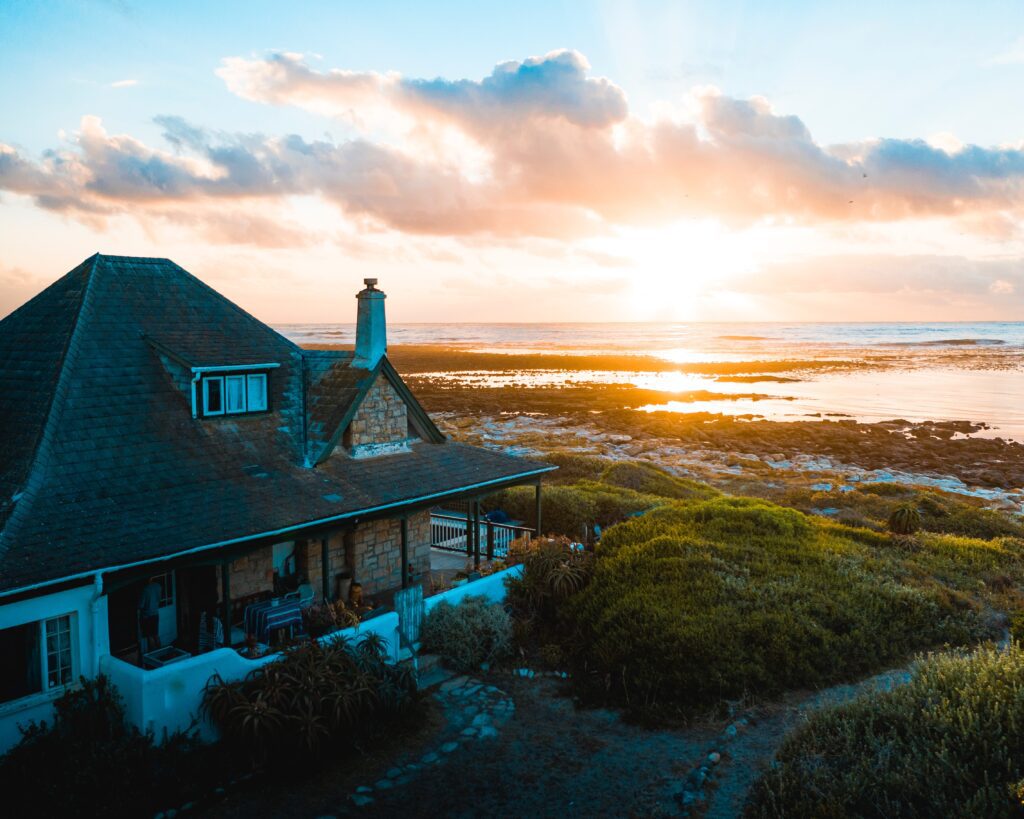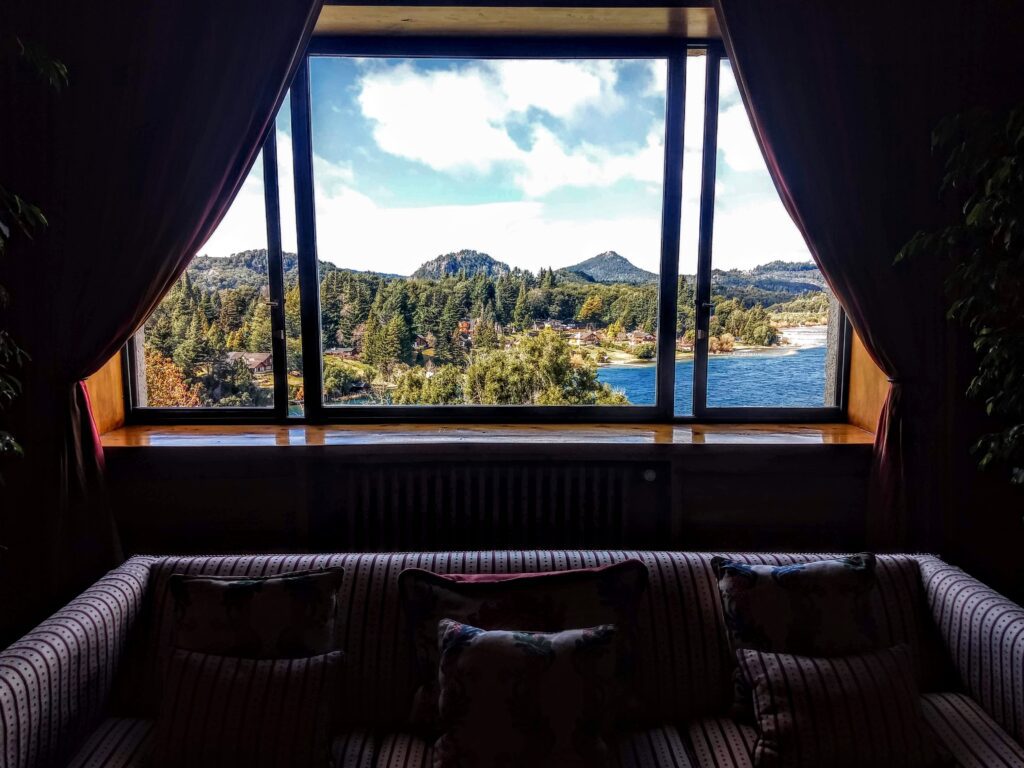Understanding Vacation Rental Pricing
Let’s dive straight into what makes a successful vacation rental pricing strategy tick—it’s all about nailing the sweet spot where your rates reflect the value of your property while staying competitive in the market.
Fundamentals of Vacation Rental Pricing Strategy
What’s the trick to setting rates that keep both you and your guests happy? Usually, it’s a mix of competitive analysis and dynamic pricing. Start by looking at other rentals in your area on platforms like Airbnb, Vrbo, Lake, and Booking.com. This snapshot gives a clue on how to position your rental:
- Analyze your competitors’ pricing for features comparable to yours.
- Use dynamic pricing tools that adjust your rates based on supply, demand, and other factors.
A versatile strategy adapts to different seasons and market changes. Price too low, and you’re leaving money on the table. Swing too high? You might just scare off potential guests. The goal is to maximize your income year-round, which requires constant tweaking and a keen eye on market trends.
Vacation Rental Industry Overview
Have you ever wondered, “What’s the big picture of the vacation rental scene?” Well, the industry is booming, with a growth trajectory that’s hard to ignore. It’s a competitive arena where the successful players know their market inside out.
Key industry stats to keep in mind:
- Market Growth: Vacation rental revenue is expected to show an annual growth rate (CAGR 2023-2027) of 7.57%, resulting in a projected market volume of US$77 billion by 2027, as reported by Statista.
- Booking Behavior: Most bookings happen online, making your online presence and pricing transparency non-negotiable.
Vacation Rental Management Association Spring Forum Highlights
I attended the VRMA Spring Forum in New Orleans in Spring 2024. More than a thousand industry professionals and service providers attended, and there was much talk around pricing strategies. I had six takeaways that I’m passing along to hosts and property managers who can implement these or reimagine how they could positively impact your portfolio.
Market Dynamics and Regulation Impacts: It is essential to recognize how market dynamics and regulatory environments influence pricing. Awareness of these factors allows for compliance with local laws and adjustments in pricing strategies to remain competitive. For example, VRMA’s role in pushing back against regulations that might negatively impact the industry is a fundamental aspect of setting strategic prices.
Short-term Vacation Rental Trends: Understanding trends such as fluctuations in average daily rates (ADR) and occupancy rates during different seasons helps set foundational pricing strategies. Observing that the first half of the year typically shows higher occupancy compared to the second half can guide basic seasonal pricing adjustments.
Importance of Feedback in Pricing: Collecting customer feedback through platforms like the Feedback widget and Partner Hub provides crucial insights into customer satisfaction and expectations. This basic yet critical step helps adjust services and pricing to meet customer needs better.
Dynamic Pricing Insights: Employing dynamic pricing based on trends in key metrics such as ADR and revenue per available rental (RevPAR) reflects a more developed strategy. After disruptions like COVID-19, which affected travel behaviors, dynamic pricing helps adapt rates based on current market conditions and past data.
Utilization of Pricing Tools and KPIs: A more sophisticated approach to pricing involves using advanced tools and key performance indicators (KPIs) for detailed data analysis. Tools like Key Data and feedback widgets assist in gathering detailed consumer insights and market data, enabling more informed and precise pricing decisions.
Strategic Responses to Market Conditions: The most advanced concept involves strategic rate adjustments in response to other maximized strategies (such as marketing and service enhancements). This approach treats rate adjustments as a finely tuned tool used only after other optimized methods, illustrating a high-level strategic understanding of pricing in the vacation rental market.
Setting the Right Nightly Rate

In the pursuit of maximizing your vacation rental income, setting the right nightly rate is both an art and a science. Let’s dive in to understand market trends and assess competition, then adjust for occupancy and demand to price perfectly.
Assessing Market Trends and Competition
Have you ever asked yourself how your neighbors manage to keep their rentals booked? It’s likely because they’re in tune with the market trends. To not miss out:
- Know the Basics: Average nightly rates in your area form the foundation of your pricing. A quick online search can reel in these figures. For instance, if the average rate is $150, that’s your starting point.
- Scout the Competition: Who are you up against? Look for rentals with similar features and see how they price their space. Create a competitive matrix that lists their rates, offering a clear view.
- Adjust with Real Data: Use industry reports and statistics. If a market analysis says the demand for vacation rentals has spiked by 20% this year, factor that into your pricing.
Analyzing Occupancy and Demand
Now, let’s talk about turning those vacant nights into occupied ones.
- Track Your Occupancy: Keep a close eye on your occupancy rates. If you’re booked 90% of the time, great—you might consider nudging prices up. If it’s lower, say 50%, it’s time to rethink your strategy.
- Demand Fluctuations: Are there seasonal peaks or big events in town? Adjust your rates accordingly. No one wants to overpay during the off-season, but they might during that summer festival.
- Data Is Your Friend: Utilize dynamic pricing tools that analyze real-time market data. This tech-savviness can boost your revenue by responding instantly to changes in demand.
Remember, getting the price right is key to your success—too high and you’re invisible, too low and you’re leaving money on the table. Use these strategies to stay on your game and keep those bookings rolling in.
Maximizing Revenue with Dynamic Pricing
Did you know that the right pricing strategy can turn your vacation rental into a revenue-generating powerhouse? Let’s explore the magic of dynamic pricing and how it can boost your earnings!
Introduction to Dynamic Pricing Tools
Dynamic pricing isn’t just a buzzword; it’s a technology-driven approach that changes the game for vacation rental owners like you. Think of it as the stock market, but for your property rates. Dynamic pricing tools analyze a range of factors, from local events to seasonal trends, ensuring your prices are always in step with the market’s pulse. Here’s the deal:
- Seasonality: Your prices adjust to peak and off-peak seasons.
- Local Events: Got a big conference coming to town? Prices go up!
- Competitor Rates: Keeping an eye on the competition so you don’t have to.
Leading revenue management systems typically feature pricing software that automates these adjustments, meaning you’re not tied to a desk making constant updates.
Advantages of Real-Time Data
Why guess when you can know? Real-time data turns what if into what is. Here’s a snapshot of its key benefits:
- Informed Decision-Making: With real-time data, you’re playing chess, not checkers. Every move is informed.
- Optimized Occupancy: Hit the sweet spot between high rates and full bookings.
- Feedback Loop: Your rates respond to the market like a conversation—listen, speak, repeat.
Your vacation rental business thrives on data. By relying on the latest information, dynamic pricing tools let you adapt to the ever-changing vacation landscape with precision. Better yet, these tools often forecast future demand so you can stay one step ahead.
With dynamic pricing, you’re not just setting prices; you’re strategically positioning your rental to maximize revenue. It’s a small change that could mean a big difference for your business. Ready to give it a try?
Leveraging Local Insights for Pricing

Before diving into specifics, know that local events and seasonal trends are crucial in determining the most effective pricing strategy for your vacation rental.
Impact of Local Events and Festivals
Have you considered how a jazz festival or a yearly food expo might affect the demand for rentals in your area? Get ahead of the game by marking your calendar with these dates:
- Local Festivals: They can increase rental demand by 25%, as found by a study from VacationRentalPros.
- Sporting Events: Big games can cause a surge in prices. For instance, a Super Bowl can boost local rental prices by up to 50%, according to AirDNA.
What’s happening in your city? Check local event schedules and adjust your prices to match the increased demand. But beware of the aftermath; prices might need to revert back quicker than they spiked!
Understanding Seasonality and Market Conditions
The time of year can make or break your rental income. Here’s what you need to know:
Peak Season:
- Consider raising prices by 20-30%. If you’re by the beach, summer is your hot season, and in the ski regions, the winter months are your goldmine.
Off-Peak Season:
- Offer discounts or value-added services to stay competitive when the crowd thins out.
Did you know? A rental near a ski resort could see a dip in prices by 40% during the summer, as observed by RentalPreneurs.
Who are your guests? Tailor your pricing based on the seasonal guests’ profiles. Business travelers, snowbirds, or holidaymakers – they all have different needs and budget sensitivities.
Leverage your local market expertise to align your pricing strategy with the ebb and flow of your regional demand. Remember, the local insights you gather can give your vacation rental an edge in a crowded market. Keep an ear to the ground, and let the rhythm of your city’s events guide your pricing strategy like a well-conducted symphony.
Technology in Pricing: Tools and Algorithms
In the dynamic world of vacation rentals, striking the perfect balance in pricing can be a game-changer for your business. Innovative tools and algorithms have emerged that leverage machine learning to make data-driven pricing decisions, offering you a competitive edge.
Machine Learning and Pricing Algorithms
Machine learning is revolutionizing how you can set prices for your vacation rentals. By analyzing vast datasets, including seasonal trends, local events, and historical occupancy rates, algorithms can predict optimal pricing with impressive accuracy. For instance, PriceLabs employs sophisticated machine learning techniques to adjust your prices daily, ensuring they reflect real-time market conditions. A major benefit here is the automation of pricing adjustments, saving you hours of manual analysis.
- Key Advantages of Machine Learning in Pricing:
- Automated price optimization based on high volumes of data
- Real-time adjustments to reflect market conditions
Comparing Leading Vacation Rental Pricing Software
Let’s dive into some of the top contenders in the vacation rental pricing software arena:
- Beyond Pricing: Utilizes real-time market data to automatically update your rates. It even offers a health score for each property, helping you identify areas for improvement in your strategy.
- Hostaway: Known for its comprehensive suite of dynamic pricing tools that integrate seamlessly with property management systems (PMS) for streamlined operations.
When comparing different software, consider factors like integration with your current PMS, pricing structure (e.g., a percentage of your total bookings), and the availability of a free trial to test the waters.
- What to Look for in Vacation Rental Pricing Software:
- Integration with current systems
- Transparent pricing models
- Free trials or demos
These tools empower you to make informed decisions backed by data to optimize your revenue and minimize vacancies. Remember, the right pricing tool fits seamlessly into your business, giving you the flexibility and control you need to stay ahead in a competitive market.
Amenities and Additional Charges

Planning your vacation rental pricing is no small feat. You want to entice guests with fantastic amenities but also need to be transparent about extra fees. Let’s navigate these waters!
Boosting Attractiveness with Amenities
Ever thought about soaking in a hot tub under the stars after a long day of adventure? Guests sure do! Presenting your amenities attractively can set your property apart. Consider this:
- Hot Tub: They’re a hit! Photos of your sparkling hot tub can increase click-through rates by 15%.
- Wi-Fi & Entertainment: A whopping 72% of guests filter searches for rentals with internet access. Highlighting high-speed Wi-Fi and streaming services can be a deal-maker.
- Local Experiences: Go beyond the basics. Provide bikes for guests to explore, or a guidebook for local secrets. It’s about crafting that perfect stay.
Setting Expectations with Additional Fees
Transparency is your best pal here. Don’t play hide and seek with fees – guests appreciate knowing upfront. Break it down:
- Cleaning Fee: It’s standard practice, but ensure it reflects the true cost of keeping your place spick and span. Clarity on this avoids negative reviews post-stay.
- Service Charges: If you offer extra services like daily housekeeping or guided tours, list them clearly. Itemize these additional perks to avoid surprises at checkout.
Remember, it’s all about balance. Tempt with amenities, but keep fee revelations as clear as crystal blue waters. Your guests will thank you, and your reviews just might glisten as much as your amenities.
Strategic Discounting and Promotions
Crafting the perfect discount or promotion for your vacation rental isn’t just about slashing prices—it’s about finding the sweet spot where value meets demand. Whether it’s enticing early birds or filling up last-minute vacancies, the right strategy can lead to a booked calendar and happy guests.
Seasonal Discounts and Promotions
A tried-and-true method to ensure your property is booked year-round is offering seasonal discounts. Statistics show that properties offering a 10-20% discount during off-peak seasons see a significant increase in bookings. For example:
- Winter Deals: If you’re in a beach destination, offering a ‘Warm Winter Escape’ promotion could attract guests looking for a sunny respite from the cold.
- Summer Specials: Have a ski chalet? A ‘Summer Adventure Discount’ might just be the thing for hikers and outdoor enthusiasts.
It’s all about adding value to times of the year when guests might not typically consider your location.
Last-Minute Bookings and Early Bird Deals
Tap into the spontaneous traveler market with last-minute discounts. Perhaps a 15% discount for booking within 10 days of their stay could fill up those unexpected vacancies. The urgency of a ticking clock can be quite the motivator!
On the flip side, reward planners with early bird deals. Encourage bookings 3 to 6 months in advance with a tempting 10% off the standard rate. Quotes from industry analysts highlight that guests feel appreciated with such deals, often leading to higher customer satisfaction and repeat business.
It’s not just about lowering prices; it’s about creating an irresistible offer that feels like a win-win for you and your guests.
Customer Experience and Reviews
Customer experience directly impacts your vacation rental’s appeal and, by extension, your pricing power. Make sure you get the formula right.
The Role of Positive Reviews in Pricing
Ever wondered why some vacation rentals seem to justify higher rates with ease? Positive reviews are the not-so-secret ingredient. They play a crucial role in signaling quality and reliability to potential guests. Here’s a statistic to chew on: vacation rentals with average review scores above 4 stars can often command prices up to 30% higher than their lower-rated counterparts, according to industry analysts. Positive reviews boost guest demand, allowing the luxury of setting higher rates without deterring bookings. On the flip side, negative feedback, especially about cleanliness or amenities, can force you to lower prices just to stay competitive. Don’t forget—every 5-star review is a stepping stone to a more lucrative pricing tier!
Improving Your Listing with Professional Photos and Detailed Descriptions
First impressions count, don’t they? Listings with professional photos can see up to a 40% increase in click-through rates on booking platforms, as noted by market research firms. When potential guests are scoping out places to stay, vivid images that highlight your space’s best features can give you the edge. And if you pair these striking visuals with detailed descriptions that cover every nook and cranny (there we go, avoiding that word we don’t use), you’ve got a winning combo.
- Boldly market amenities and upgrades in your description to stand out.
- Highlight your commitment to top-notch cleaning services to assuage hygiene concerns.
- Mention unique features that give your property character—do you offer breathtaking views or a cozy reading corner by the fireplace?
Your goal is to paint a picture so enticing that it makes travelers hit ‘Book Now’ without a second thought!
Regulations and Real Estate Insights

Navigating the vacation rental market can feel like solving a puzzle. You’ve got the pieces – regulations and real estate market conditions – but how do they fit together to impact your pricing strategy?
Vacation Rental Regulations
Have you ever wondered why the same type of property can be priced so differently on platforms like Airbnb and Vrbo? Local laws and regulations play a huge part. Here’s what you need to keep track of:
- Zoning laws: Some areas may restrict short-term rentals altogether or require special permits.
- Tax requirements: Be prepared to collect and remit taxes, which vary by location.
- Safety and health codes: Stay up-to-date with regulations to ensure guest safety and avoid fines.
Getting dinged with a hefty fine for non-compliance is never fun. Platforms like Airbnb and Vrbo often provide resources to help you understand your local laws, so use them!
Real Estate Market Influence on Vacation Rental Pricing
Did you know that the pulse of the real estate market can make your vacation rental’s heart beat faster or slower? It’s all about supply and demand. Real estate services and licensed real estate brokerages keep a close eye on these trends, and here’s why you should too:
- Local market rates: Your rental should be competitive with similar properties in the area. Don’t be the odd one out by pricing too high or leaving money on the table.
- Seasonal fluctuations: Just like ice cream sellers see a spike in summer, vacation rentals can see a surge in demand depending on the time of year.
- Economic conditions: Wider economic trends can affect travel spending. Keep an eye on the news!
Aligning your pricing strategy with the real estate market means you’re not just following the crowd—you’re smartly navigating it.
Managing Expectations: Transparency and Policies
Navigating vacation rental prices can be tricky, but understanding and clearly communicating policies set the stage for a seamless experience—for both you and your guests.
Cancellation and Booking Policies
Cancellation Policy
- Flexibility: Do you offer a full refund up to a certain point? It’s known that rentals with more flexible cancellation policies tend to attract more bookings.
- Clarity: Ensure your policy is written in plain language. No one likes to be caught off guard, especially not on vacation.
- Deadline: Clearly state how many days before check-in a cancellation is allowed. A typical policy might state, “Cancel up to 5 days before check-in and get a full refund.”
Table: Cancellation Policy Breakdown
| Timeframe Before Check-in | Refund Amount | Notes |
|---|---|---|
| More than 5 days | 100% | Minus service fees |
| Less than 5 days | 50% | To cover potential losses |
| Day of Check-in | 0% | Strict policy for late cancellation |
Communicating with Potential Guests
First Impressions
Reach out with welcome messages that hint at your willingness to provide a standout stay. Don’t be a faceless host; show that you care!
Clear Descriptions
- Amenities: Does your spot have a hot tub or a fireplace? Make sure you highlight these!
- Photos: High-quality photos can increase bookings by up to 24%, according to market research.
- Rules: Are parties a no-go? Mention this upfront to avoid misunderstandings.
Remember, no detail is too small when setting expectations. The aim is to provide a transparent overview that aligns with what guests will experience, effectively managing expectations and ultimately securing satisfaction. So, how about making your next guest’s stay hassle-free?






